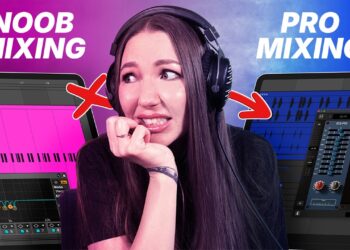Check out LX-24 | https://bit.ly/3CdWHOh
Check out FX Collection 4 | https://bit.ly/3MOlpK5
Check out All NEW VST Deals | https://bit.ly/3CfCQ1m
In this video tutorial, Joshua Casper tells you his top 5 reasons the REV LX-24 Digital Reverb by Arturia is incredible.
*REV LX-24 is now available in the recently released FX Collection 4 by Arturia
00:00 5 Reason Why
01:02 Reverb Algorithms and Convertors
04:12 Very Cool Feature
05:06 Advanced Panel
05:43 Visual Display
07:48 Bit Convertors
08:29 Mode Enhancements
10:42 Decay Optimization
11:40 Dynamics Modes
14:24 Outro
Highlighted Feartures:
8 Algorithms with 3 Convertor types
One very cool thing here, these are emulations of the originals which is stunning in and of itself, but, when you choose a new algorithm the main reverb parameters update to what the team at Arturia say is the closest to the original sound.
Mode Enhancement which can be turned on or off as well as a strength adjuster.
This increases the effective density of the modes by modulating the algorithm time delay giving it a noticeably warmer sound, which was one of the original 224’s most well regarded features.
Lower values are stronger.
This works in tandem with the Pitch Shift Control. High values give higher modulation. There’s a sweet spot around 5-6 where there is a chorusing effect on the reverb tail and very high values will introduce audible pitch slurring.
Decay optimization makes the decay more natural by altering the internal parameters in response to the changes in input level. This one feature can tell the difference between drums and vocals, for example, and adjust the parameters corresponding to each.
Lower values are stronger.
Dynamic Module – Built in Ducker, Tremolo, Gate with External Sidechain capabilities for the Ducker and Gate.
Graphical Display – these parameters are the ones found on the main page in addition to the frequency crossover position linked to the decay and damping. The a line graph is the input signal and the cloud is the reverb.
#arturia
#pluginboutique
#reverb











![How WE Produced “On Your Own” by Lil Tecca + [FREE KIT]](https://beatmakingvideos.com/wp-content/uploads/2025/11/how-we-produced-on-your-own-by-lil-tecca-free-kit-1-360x180.jpg)

